What are the corresponding changes in the body when the blood vessels in the brain become clogged and hardened?
Blockage and hardening of blood vessels in the brain, which are part of a varying degree ofCerebral vascular sclerosis is mostly a manifestation of aging blood vessels, referring to the reduced elasticity of blood vessels in the brain and the narrowing of blood vessels, which makes the blood flow reduced, but generally does not induce cerebral ischemic necrosis. AndCerebrovascular blockage refers to the formation or embolization of blood clots in the cerebral blood vessels, or even complete blockage of the cerebral blood vessels, so that the blood can not pass through, which will induce cerebral infarction.
What are the corresponding changes in the body when the blood vessels in the brain become clogged and hardened?
The most common cause of cerebrovascular blockage is atherosclerosis, which can be accelerated by diabetes mellitus, hyperlipidemia and hypertension. And cerebral vascular sclerosis is a kind of arteriosclerosis, so that cerebral vascular sclerosis is the initial manifestation of cerebral vascular blockage, and further development of arteriosclerosis will lead to thrombus formation, and ultimately induce cerebral infarction.
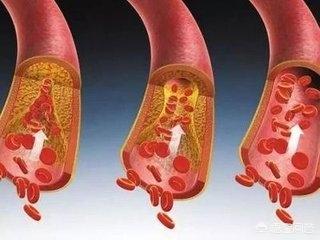
Cerebral arteriosclerosis manifestations:
1. Long-term insufficient blood supply to the brain leads to reduced brain function. Manifested as headache and dizziness, blurred vision, hearing loss,Tinnitus,Numbness of the limbs, or sleepiness and weakness and sleep disorders, etc. Insomnia predominates in the early stages and drowsiness in the later stages.
2. Nervous system disorder. Manifested by memory loss, slow thinking activities, lack of concentration and lazy life.
3. Cerebral atrophy. Long-term ischemia and hypoxia of brain tissue will lead to cerebral atrophy, making the patient's comprehension and judgment decline.Development of atherosclerotic dementia.Difficulty in calculating, mental laxity, low work force, serious or even inability to take care of themselves.
4. Character and emotional changes. Expressed as emotional irritability,Depression,Terrorism, hallucinations, delusions, repetitive and verbose speech, incoherence, etc., clinically known as cerebral atherosclerotic psychosis. PersonalityBecoming apathetic, withdrawn, lazy, mean, childish, etc.
5. Pseudobulbar palsy. If the lesion damages the cortical brainstem bundles on both sides, it manifests as choking on drinking water, dysphagia, hoarseness, clumsiness in limb movement and strong crying and laughing.
6. Behavioral manifestations. Patients often present withDisordered behavior, inactivity, sometimes impulsive, aggressive behavior, impaired self-control.
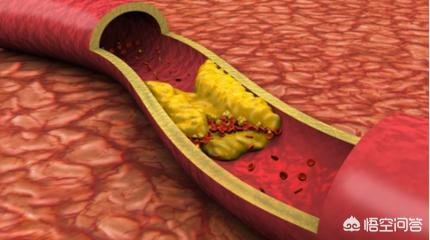
Manifestations of cerebral vascular blockage:
1, limb numbness and weakness: manifested as walking leg weakness, gait changes, limb numbness and weakness.
2, yawning: cerebral blood supply, oxygen supply is insufficient, the body will often use yawning way to self-relief.
3, elevated blood pressure; blood vessel blockage leads to narrowing of the blood flow path, making the blood pressure rise.
4, severe headache: manifested as a sudden onset of severe headache.
5,Sudden Vertigo: Vertigo is one of the common symptoms and occurs most often in the morning when you wake up, when you are tired, and after taking a shower.
6,Nosebleeds: Frequent and massive nosebleeds, or with bleeding from the fundus of the eye, hematuria, this group of people often occur within six months of cerebrovascular blockage caused by hemiplegia, cerebral hemorrhage and so on.
7、Other symptoms: Difficulty in swallowing, hemiplegia, fatigue, drowsiness and other early symptoms.
Blood vessel blockage and hardening is the main reason for the development of various cardiovascular and cerebrovascular diseases, which will block the blood flow and cause various organs of the body to lack blood and oxygen. If the blood vessels in the brain are blocked and hardened, then we need to be vigilant about cerebral stroke, which is fast-onset and has a high rate of disability, and in addition to paraplegia and hemiplegia, it can even lead to sudden death, which is extremely harmful.

The body has the following five changes, indicating that the cerebral blood vessels began to clog and harden, need to be alert to stroke.
1. Incoherent speech, slurred speech
If the blood supply to the brain is insufficient and the nerves controlling the body's activity are malfunctioning, then Jiu will experience incoherent or slurred speech, but for a relatively short period of time.
2. Frequent vertigo
In recent times, if you always feel dizzy or have a headache that returns to normal after a while and recurs, it may be caused by a transient ischemic attack.
3. Sudden blackness before the eyes
Poor vision or a sudden darkening of both eyes, which recovers after a few seconds or tens of seconds, can also be caused by retinal ischemia due to cerebral ischemia, which is also one of the signs of stroke.
4. Nosebleeds
People with high blood pressure should pay special attention to the fact that if a nosebleed occurs, this is likely to be a sign of an impending stroke, as many nosebleeds are caused by fluctuations in blood pressure, and failure to take precautions can increase the chances of a stroke.
6. Numbness of fingers
Numbness of the fingers or one side of the body numbness, walking is not good, these are also to be alert to stroke, especially for the age of 40 years old and have high blood pressure, high blood lipids, diabetes or cerebral arteriosclerosis and other diseases of the history of the middle-aged people, should pay more attention to.
If you find these signals of cerebral blood vessel blockage, you must go to the hospital in time to check, stroke onset fast, do not wait for the occurrence of attention. Daily good blood vessel maintenance work, can largely avoid the occurrence of cerebral stroke.

To prevent a stroke, drink a glass of water and do an action often.
Drink a glass of water often: a glass of agaricus asparagus drink
Agaricus asparagus drink is made of agaricus, asparagus, soybeans, goji berries and other vascular ingredients decoction to get, the ancient medical book "Thousand Gold Formula" of therapeutic recipes recorded, take 20 grams of asparagus, agaricus 20 grams of soybeans 10 grams of goji berries 10 grams of the four kinds of food washed and decocted for 30 minutes, take the juice to drink can be drunk three times a day, about three months to six months to reach dredging blood vessels, the effects of blood vessel maintenance.
Besides decoction, there is another way to consume Agaricus mushroom and asparagus drink, i.e. fermentation. The ingredients remain the same, but after fermentation with probiotics to get the Agaricus mushroom asparagus probiotic fermentation liquid, blood vessel nourishment, prevention of cardiovascular disease effect is more perfect, which is other decoction or tea drinks and so on can not reach.
Do one thing often: stand on tiptoe every day
Wear a pair of flat shoes, stand firmly, then lift the heel, use the foot to support the body, tiptoe for about 2 seconds and then put down the heel, stand firmly and then lift the heel again, and so on, repeat, about do 5 minutes can be, can stimulate the blood vessels, so that the blood vessels to get regular squeeze and relaxation, to prevent blood vessel clogging and hardening.
45-year-old Mr. Wen, himself suffers from high blood pressure, the family is doing business, often go out to dinner and socialize, only to come back in the middle of the night, and in the morning to drive the highway, his wife is always worried about his health problems, and often advised him to take a break.
Mr. Wen, however, said that the family children are also big, in a few years are going to get married, while now hurry to save them some money, no way, the wife can only often take her husband to the hospital for medical examination, I did not expect to really find out the abnormalities recently: atherosclerosis of the brain.
Cerebral atherosclerosis occurs mostly in people over 40 years of age and refers to the functional disorders of the brain caused by ischemic necrosis of the brain parenchyma due to the reduction of blood flow of the blood vessels in the brain due to chronic hyperplasia or degeneration, which leads to the occlusion of cerebral blood vessels. It is common in people who suffer from hypertension, hyperlipidemia, diabetes mellitus, etc., as well as in people who suffer from frequent mental stress, long-term smoking, and alcohol consumption.

What are the changes that occur when the arterial blood vessels in our brain harden?
1. Dizziness. We often suddenly squat or stand up when the symptoms of dizziness, especially those who suffer from high blood pressure, this is because in the regular intake of fatty foods, long-term, will make the blood become viscous, thus triggering the emergence of atherosclerosis, this situation is often related to diet, so in general can be prevented from the aspect of diet, to low-fat, low-salt, to eat a light diet, such as animal offal, fatty meats The high blood fat food should be eaten appropriately, not too much or often eat.
2. When suffering from cerebral arteriosclerosis, insomnia and headache will appear in the early stage, but not all people suffering from arteriosclerosis will have this situation, and there are some part of the population who do not have symptoms in the early stage.
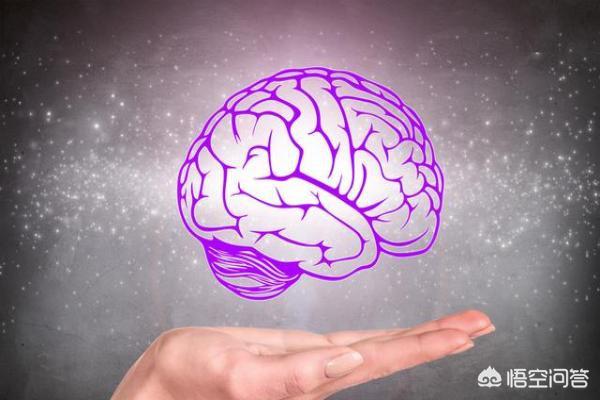
3. Dullness in the head, and this situation is persistent, when the heart has insufficient blood supply, will cause the brain's oxygen supply is insufficient, resulting in dullness, this situation can be consumed in normal times to promote blood circulation and eliminate blood stasis of food and drugs, but also appropriate exercise, so that the body's metabolic ability to improve, will promote blood circulation, will reduce the emergence of arteriosclerosis in the brain. This will promote blood circulation and reduce the occurrence of arteriosclerosis in the brain.
4. Lack of concentration, which worsens as the condition worsens, so that it is not obvious in the early stages of its appearance, and in severe cases, dementia may occur.
5. Numbness of the limbs, soreness of the muscles, etc.

I hope my answer helps you!
If there's anything you don't understand, comment and private message me!
We often hear that a certain old man slept after a side of the body can not move, a certain old man actually do not recognize their own relatives, a certain old man kept yawning and so on, these may be the elderly cerebrovascular problems precursors, with the age of the body will appear a lot of degenerative changes, the elderly cerebrovascular sclerosis, clogging is unavoidable, the main role of the cerebrovascular is to ensure the supply of blood, nutrients and oxygen to the brain, then once the blockage will affect the supply of these substances. The main role of cerebral blood vessels is to ensure the supply of blood, nutrients, oxygen to the brain, so once blocked will affect the supply of these substances, in the case of cerebral vascular sclerosis, blockage of certain parts of the body will produce the corresponding symptoms, so what symptoms we need to pay attention to when it occurs? How does cerebral vascular sclerosis and blockage affect the life of the elderly? What are the general signs of cerebral vascular sclerosis? After cerebral vascular sclerosis, the elasticity of blood vessels becomes poor, the occurrence of cerebrovascular accidents increases, especially hypertension patients are more likely to occur, when the cerebral vascular rupture occurs, hemiplegia in mild cases, and fatal in severe cases. Cerebral vascular sclerosis main changes in the body manifested in the skull, general dizziness and headache is common in the back of the head area of the pain, the basilar artery sclerosis of the brain can be vertigo, nausea, facial paralysis and other manifestations of the elderly, some of them are to memory loss, inattention is the main reason for the blood supply to the brain is affected. With the aggravation of sclerosis if not timely intervention may appear dementia, behavioral disorders, impaired consciousness, delusions and other conditions that endanger the lives of the elderly. If the elderly around you suddenly become strange behavior, memory loss, etc. should promptly go to the hospital for examination, under the guidance of professional doctors to do a good job of treatment. Cerebrovascular blockage, also known as cerebral thrombosis, cerebrovascular blockage of different degrees of general body will appear different manifestations, generally can appear to walk unsteadily, numbness and weakness of the limbs, blockage of blood vessels to transport oxygen ability to decline will appear to yawn constantly to increase the brain supply of oxygen, the abnormal changes in blood pressure is also one of the common manifestations of cerebral vascular blockage, blockage of cerebral blood vessels can cause severe headache, convulsions, coughing can be aggravated, severe patients will become drowsy, and the patient will have to go to the hospital for treatment. Severe patients may experience drowsiness and coma. If there is dizziness, dysphagia, hemiplegia, drowsiness, tinnitus, visual impairment, etc. also suggests cerebrovascular blockage, if there is hypertension, diabetes, heart disease and other underlying diseases of the elderly cerebral vascular sclerosis, blockage occurs the odds will be higher. In fact, our body before the disease will release a lot of advance signals, changes in certain parts of the body will also suggest the occurrence of the corresponding disease, such as the elderly yawning may be cerebrovascular problems, coughing up blood may have the possibility of lung cancer, frequent urination may suggest that there is diabetes, etc., the other diseases and the body's performance welcome you to actively add, whether it is possible to organize into a booklet to help people in need?
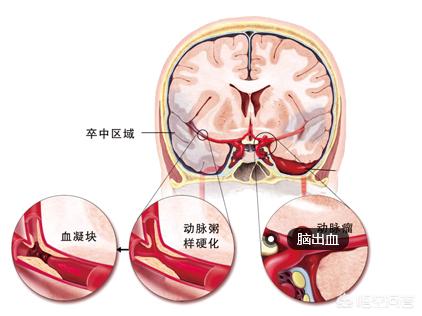 As the title suggests, "What are the corresponding changes in the body when the blood vessels in the brain become clogged and hardened?"Asked.When the blood vessels in the brain are blocked and hardened, there is a chance of transient ischemic attack (TIA) or even cerebral infarction, and when different blood vessels are involved, corresponding neurological deficits may occur.
As the title suggests, "What are the corresponding changes in the body when the blood vessels in the brain become clogged and hardened?"Asked.When the blood vessels in the brain are blocked and hardened, there is a chance of transient ischemic attack (TIA) or even cerebral infarction, and when different blood vessels are involved, corresponding neurological deficits may occur.
Transient ischemic attack is a transient neurological deficit caused by localized cerebral ischemia, with an onset of less than one hour, rapid recovery and no sequelae. The pathogenesis of transient ischemic attack (TIA) is associated with two types.
One is hemodynamic alterations, which occur when fluctuations in blood pressure based on stenosis of the carotid or basilar arterial system result in the need for collateral circulation to maintain brain tissue (Transient ischemia), but this type has more frequent clinical episodes with short duration (No more than 10 minutes(See Section 2.1.2.).
The second is microembolism, which is a condition in which atherosclerotic unstable plaques, wall-attached thrombi, valvular or nonvalvular emboli dislodge and embolize small arteries, and ischemia occurs in the area of their blood supply; however, when the emboli are fragmented and distantly displaced, or spontaneous dissolution of emboli occurs, the blocked vessel is unblocked, and the symptoms of the original ischemia can be relieved. This type is characterized by a long duration of the attack, usually lasting more than 30 minutes (mostlycardiogenic embolus)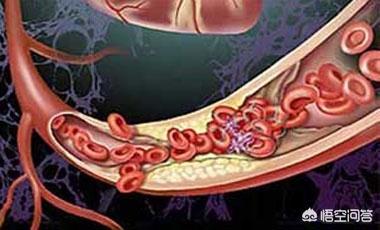
Cerebral infarction refers to the clinical syndrome of ischemia, necrosis, and corresponding neurological deficits caused by various reasons of blood supply obstruction in brain tissues. Different locations of cerebrovascular blockage will lead to corresponding clinical manifestations, and according to the OCSP typing criteria, it can be quickly typed according to clinical manifestations.
1. Complete anterior circulation infarction (TACI), which may manifest as high-level neurological activity disorders, such as the appearance of consciousness, aphasia, dysarthria, spatial disorientation, etc., and may appear to correspond to the face, the lower limbs, the upper limbs of motor and sensory deficits;
2. Partial anterior circulation infarction, which may manifest as hemiparesis, hemianopsia, hemiplegia, hemiplegia, and high-level neural activity deficits, but is more limited than TCAI;
3. Posterior circulation infarction, which may manifest vertebrobasilar syndrome, such as homolateral cerebral nerve palsy and countermeasure sensory-motor disorder, cerebellar dysfunction, etc.; 4. Cavernous infarction, which may manifest various cavernous syndromes, such as purely motor hemiparesis, purely sensory stroke, and ataxic mild hemiparesis.
This question and answer are from the site users, does not represent the position of the site, such as infringement, please contact the administrator to delete.